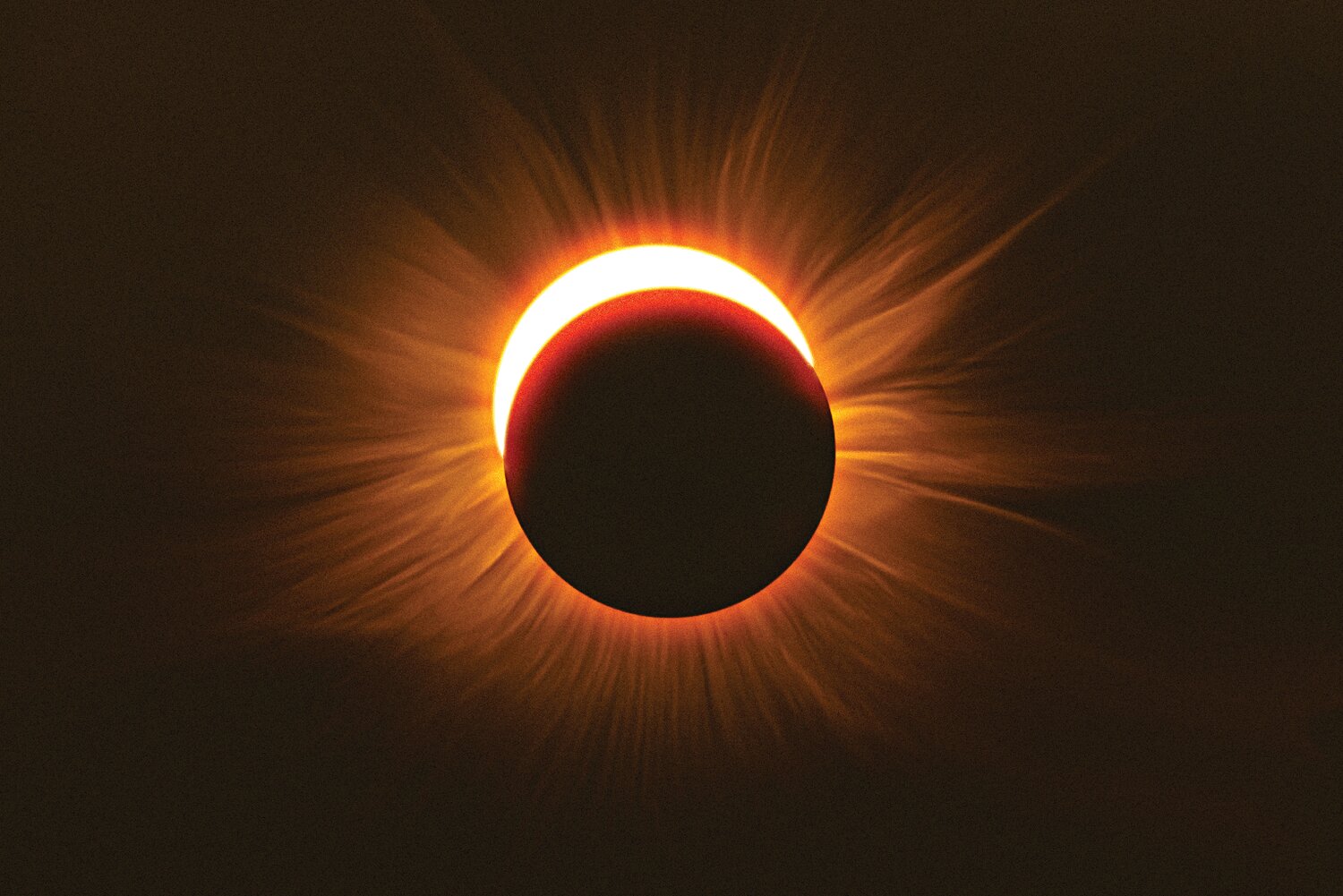Monday, April 29, 2024
 80.0°,
Partly Cloudy
80.0°,
Partly Cloudy
Forecast calls for sun with a passing moon

East Rockaway students are gearing up for an astronomical event that won’t happen in the local area again for over 50 years.
The total solar eclipse will cross North America April 8, entering southwestern Texas at 12:23 CDT and exiting Maine at 4:40 EDT. Parts of northern New York will be in the path of totality where the moon will completely cover the sun and cause day to become night for about four minutes at 3:20 p.m. On Long Island, only about 90% of the sun will be covered by the moon, which is enough for ninth graders to receive an hour-long, interactive lesson on the eclipse.
“All of our ninth graders are taking earth science and we felt that this would be a really strong tie to the curriculum,” Dame Forbes, science department chairperson for the district, said. “And we wanted to do this so the students can get a hands-on experience in engaging with a natural phenomenon that is not going to happen in our area for quite some time.”
Forbes explained that the next total solar eclipse to happen in New York will happen again in 2079. This is why she wanted to give the students an opportunity to not only experience the event, but also better understand their coursework by seeing what they’re learning in their textbooks come to life.
“We’re basically going to have the kids go outside and safely observe the solar eclipse using certified glasses for solar eclipse viewing,” Brian Crowley, East Rockaway High School earth science teacher, said. “While they’re doing that, they’re going to be drawing what they’re observing.”
Crowley said that every year he teaches his students about the eclipse and now, he is finally able to show them what it looks like in real life. He, along with the other earth science classes, will be going onto the high school’s field starting at 2:05 p.m. until the end of the school day. Crowley said that if there are no clouds in the sky, the peak and best part of the entire event will be around 3:20 p.m., which any student has the opportunity to view after the last period bell rings prior to the peak.
“We taught the students about the phases of the moon and solar eclipses can only happen during the new moon,” Crowley said. “But you don’t get a solar eclipse during every new moon so what we’re trying to emphasize is that there’s a certain alignment that is taking place.”
The alignment, which Forbes said is called syzygy, involves the Earth, moon, and the sun being positioned perfectly for a total eclipse to occur making eclipses so rare.
Forbes mentioned that some of the observations that the students will record during the eclipse are changes in the temperature and changes in the appearance of the clouds. She noted how special it is for the students to take part in this event because the next time this happens in the area; they may have children of their own.
“This event gives these students a chance to maybe one day talk about when they saw the US solar eclipse as a child with some new loved ones,” Forbes said.
For anyone viewing this event, Forbes reiterated that using sunglasses will not protect your eyes. Instead, you need to use ISO-compliant eclipse glasses, which are a thousand times darker than regular sunglasses.
“Some of our glasses were donated by NASA Globe, which is a part of NASA that works with schools across the country and we were able to get some glasses from them,” Forbes said.
Crowley explained that although 90% of the sun will be covered, it will still be light as day. However, the brightness might decrease a little; similar to if a cloud was moving over the sun.
“They say in the totality region, the cricket starts chirping,” Crowley said. “I don’t think we’re going to see that, but we might see a little bit of a slight dim.
Forbes said that this event will be much more significant than the 2017 partial eclipse where the area only saw about 50% of the sun covered. With the next eclipse not occurring decades into the future, she emphasized that this event will be a lasting memory for the students.
HELP SUPPORT LOCAL JOURNALISM
The worldwide pandemic has threatened many of the businesses you rely on every day, but don’t let it take away your source for local news. Now more than ever, we need your help to ensure nothing but the best in hyperlocal community journalism comes straight to you. Consider supporting the Herald with a small donation. It can be a one-time, or a monthly contribution, to help ensure we’re here through this crisis. To donate or for more information, click here.
Sponsored content
Other items that may interest you






